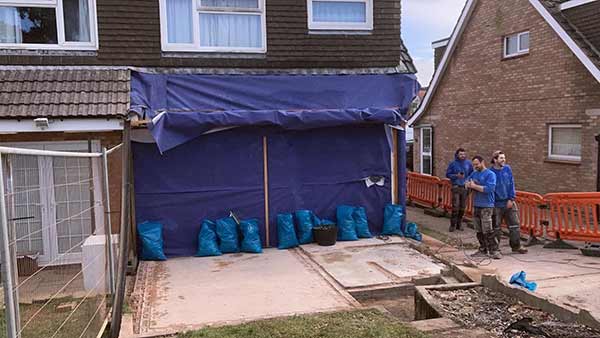New Permitted Development Rules for Additional Storeys and Extensions
On the 31st August 2020 there was a change to the permitted development rules in England that has made it easier to add more levels to your home and increase space. These are among other changes that are designed to make it easier and quicker to develop new homes, including greater flexibility to the change of use of building particularly to turn commercial properties into residential ones.

Permitted Development
Permitted Development Rights are rules that allow certain types of building work to be completed without the need for Planning Permission, which can be expensive and time consuming. In essence is it a blanket permission granted by Parliament which circumvents the need to Local Authority permissions for specific work. You can find out more on the Planning Portal.
It is important to remember that these rights are specific. This includes to specific types of building so what might be permitted on a house may not be on flats or maisonettes. There will almost certainly be restrictions for listed buildings and “designated area” such as Conservation Areas and Areas of Outstanding Natural Beauty.
There might also be the requirement for preapproval to be sought before proceeding with works. We cover this issue below as it is a big feature of the new permitted development rights, but the Planning Portal provides an excellent explanation of Prior Approval.
Upward Extensions
The new rules allow the addition of up to two additional storeys where the house consists of two or more storeys already. If it house only has one storey, only one additional storey is allowed to be added under these permitted developments.
According to research by Knight Frank there could be up to 173,000 new homes built in this manner on top of existing residential and commercial properties.
There are some restrictions:
- The rights only apply to homes built between 1 July 1948 or after 28 October 2018
- These rights cannot be used where additional storeys have been added already
- Mixed used building will not benefit from these rights
- You must get Prior Approval from the council before you proceed
Prior Approval is required from your local authority for this specific Permitted Developments for the following aspects:
- traffic and highway matters
- contamination risks
- flood risk, the external appearance of the building
- the provision of adequate natural light in all habitable rooms of the new dwellings
- privacy and loss of light
- impact on amenity of the existing building and neighbouring premises including overlooking
- the impact on any protected views
- air traffic and defense asset impacts
There is quite a list here so it is not necessarily a given that you will get the go ahead from your local authority. Your proposed plans will need to cater for these aspects to be given approval.
Pro’s and Con’s of the New Permitted Development Rights:
Obviously the big benefit to these new rights is that it should make it much easier and quicker to add space and value to your property. Although there is a growing concerns that what should be done is to reform the planning process and make it work more effectively and efficiently, rather than creating measures to circumvent it.
The other big concern with works completed under permitted developments is that they have been found to be worst in a wide range of qualitative standards as compared to buildings built under Planning Permission.
With so many of us spending so much more time at home, space is a premium at the moment and this could unlock some much needed space. Not to mention as significantly to the value of your home.





